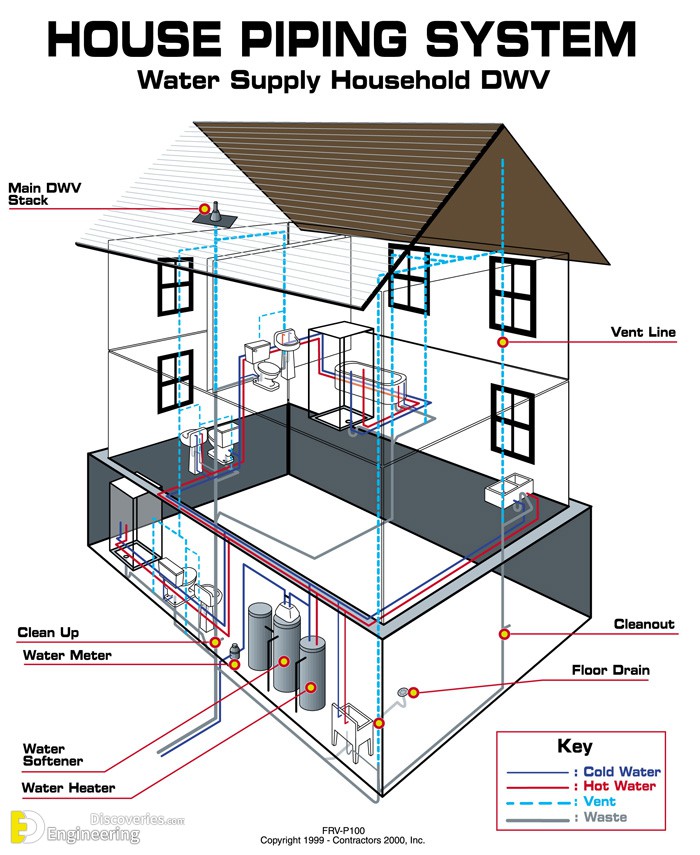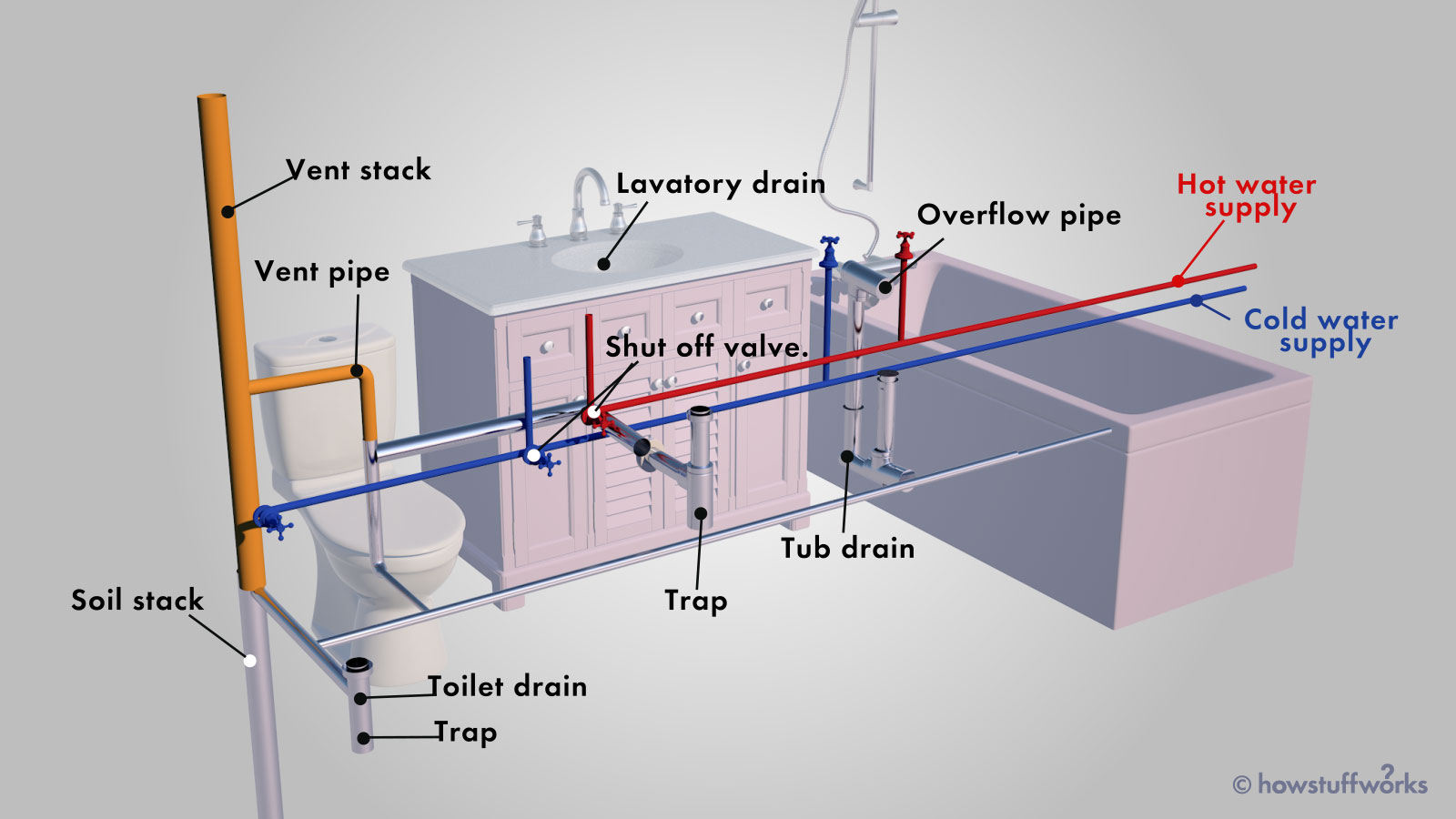Are you interested in additional info involving Understanding Your Home's Plumbing Anatomy?

Understanding how your home's plumbing system works is essential for every property owner. From providing clean water for alcohol consumption, food preparation, and showering to securely eliminating wastewater, a well-kept plumbing system is important for your household's health and wellness and comfort. In this comprehensive overview, we'll discover the detailed network that composes your home's pipes and deal ideas on upkeep, upgrades, and managing typical problems.
Intro
Your home's plumbing system is more than simply a network of pipelines; it's a complicated system that ensures you have access to clean water and efficient wastewater elimination. Understanding its elements and exactly how they collaborate can help you prevent pricey fixings and guarantee everything runs smoothly.
Standard Elements of a Pipes System
Pipes and Tubes
At the heart of your plumbing system are the pipelines and tubes that bring water throughout your home. These can be made of various materials such as copper, PVC, or PEX, each with its benefits in terms of resilience and cost-effectiveness.
Components: Sinks, Toilets, Showers, and so on.
Fixtures like sinks, commodes, showers, and tubs are where water is utilized in your home. Recognizing exactly how these fixtures attach to the pipes system assists in identifying troubles and preparing upgrades.
Shutoffs and Shut-off Points
Valves regulate the flow of water in your plumbing system. Shut-off shutoffs are vital during emergencies or when you need to make fixings, permitting you to isolate parts of the system without interfering with water flow to the whole house.
Water System
Main Water Line
The major water line links your home to the municipal water system or an exclusive well. It's where water enters your home and is dispersed to numerous components.
Water Meter and Stress Regulatory Authority
The water meter actions your water usage, while a pressure regulatory authority guarantees that water streams at a risk-free stress throughout your home's plumbing system, avoiding damages to pipelines and fixtures.
Cold Water vs. Hot Water Lines
Comprehending the difference between cold water lines, which supply water straight from the major, and hot water lines, which bring warmed water from the water heater, helps in repairing and planning for upgrades.
Drain System
Drain Pipes Pipes and Traps
Drain pipelines lug wastewater far from sinks, showers, and commodes to the sewer or septic system. Traps protect against sewer gases from entering your home and additionally trap debris that might trigger obstructions.
Ventilation Pipes
Air flow pipes allow air into the drainage system, preventing suction that might slow down water drainage and create traps to vacant. Proper ventilation is essential for preserving the honesty of your plumbing system.
Value of Correct Water Drainage
Guaranteeing appropriate water drainage stops back-ups and water damages. Frequently cleansing drains and keeping traps can protect against pricey repair services and prolong the life of your plumbing system.
Water Heater
Kinds Of Hot Water Heater
Water heaters can be tankless or standard tank-style. Tankless heating systems warmth water as needed, while storage tanks keep heated water for immediate usage.
Exactly How Water Heaters Connect to the Plumbing System
Recognizing exactly how hot water heater attach to both the cold water supply and hot water circulation lines assists in identifying issues like insufficient hot water or leakages.
Upkeep Tips for Water Heaters
Routinely purging your hot water heater to eliminate sediment, checking the temperature level setups, and checking for leakages can extend its life-span and improve energy efficiency.
Typical Plumbing Issues
Leaks and Their Causes
Leaks can occur due to maturing pipes, loosened installations, or high water pressure. Dealing with leakages immediately avoids water damage and mold and mildew growth.
Clogs and Clogs
Clogs in drains and toilets are frequently triggered by purging non-flushable items or a buildup of oil and hair. Making use of drain screens and bearing in mind what drops your drains pipes can avoid clogs.
Indicators of Plumbing Troubles to Look For
Low water stress, sluggish drains, foul odors, or abnormally high water expenses are signs of possible pipes problems that need to be resolved immediately.
Plumbing Upkeep Tips
Regular Inspections and Checks
Schedule yearly plumbing inspections to catch concerns early. Seek indicators of leaks, rust, or mineral buildup in faucets and showerheads.
Do It Yourself Maintenance Tasks
Easy jobs like cleansing faucet aerators, looking for toilet leaks making use of dye tablet computers, or shielding subjected pipes in cool environments can stop major plumbing problems.
When to Call a Specialist Plumbing
Know when a plumbing issue requires specialist competence. Attempting complicated repair work without correct knowledge can result in even more damage and higher fixing costs.
Upgrading Your Plumbing System
Factors for Upgrading
Updating to water-efficient components or replacing old pipelines can improve water high quality, reduce water expenses, and increase the value of your home.
Modern Pipes Technologies and Their Advantages
Discover technologies like smart leak detectors, water-saving bathrooms, and energy-efficient water heaters that can save money and lower environmental impact.
Price Considerations and ROI
Determine the ahead of time prices versus lasting savings when thinking about plumbing upgrades. Several upgrades spend for themselves through reduced utility bills and fewer repairs.
Ecological Effect and Preservation
Water-Saving Components and Devices
Installing low-flow taps, showerheads, and bathrooms can considerably minimize water use without compromising efficiency.
Tips for Minimizing Water Usage
Basic habits like repairing leaks promptly, taking much shorter showers, and running complete tons of laundry and dishes can preserve water and lower your energy costs.
Eco-Friendly Plumbing Options
Take into consideration sustainable pipes materials like bamboo for floor covering, which is durable and environmentally friendly, or recycled glass for countertops.
Emergency Preparedness
Steps to Take During a Pipes Emergency situation
Know where your shut-off shutoffs lie and just how to shut off the water system in case of a burst pipeline or significant leakage.
Importance of Having Emergency Calls Handy
Maintain contact information for local plumbers or emergency solutions easily available for fast reaction throughout a pipes dilemma.
DIY Emergency Situation Fixes (When Relevant).
Temporary repairs like making use of duct tape to spot a dripping pipeline or putting a bucket under a trickling tap can lessen damage until a specialist plumbing gets here.
Final thought.
Understanding the makeup of your home's plumbing system encourages you to maintain it successfully, saving money and time on repairs. By adhering to regular maintenance regimens and staying notified about contemporary pipes technologies, you can guarantee your plumbing system runs efficiently for many years ahead.
HOW YOUR PLUMBING SYSTEM WORKS
Which Pipes Do What?
- Blue lines = fresh water supply entering the building
- Red lines = hot water supply entering the building
- Grey lines = pipes carrying waste away from the building and venting pipes carrying gases away from the building (through the roof)
YOUR MAIN PLUMBING SYSTEMS
There are two main plumbing systems that support your home s basic plumbing needs one that brings clean water into your home, and one that sends dirty water away from your home. Connected to the toilet, bath, shower, and other faucets in your home, these two systems keep your water flowing in the right directions.
ACCESSING FRESH WATER
Fresh and clean water is brought into your home through the main water supply line . Filtered through one pipe, this water is pressured to flow into the various fixtures in your home at any given time.
This water can be sourced from a well located on your property, a pond or river (mostly cottages), or, as in most cases, from the city s municipal water treatment centre. However, it is important to note that water that is untreated, such as the water siphoned from ponds or rivers, may not be safe to drink. Personal water supplies always need to be treated for hardness and contaminants before consumed.
MUNICIPAL WATER SUPPLIES
- Improve taste and odour
- Remove sediment
- Eliminate hardness
- Reduce chlorine
COLD WATER SUPPLY VS. HOT WATER SUPPLY
Cold water flows into your home or building through the service line, which then distributes hot or cold water to your fixtures. This line is most commonly run through a central column that runs floor to floor. Hot water runs in short and straight pipes as the longer the pipeline, the more heat that will be lost in the transfer. Having shorter pipes also allows residents to access hot water more quickly.
WASTE WATER SYSTEM
Your wastewater system is divided into two parts pipes that send wastewater away from your home and venting pipes that send sewer gas away from your home. Sewage water travels through pipes that flush the water and waste towards local sewers that are operated and managed by your city or town. Most sewer systems rely on gravity to move the wastewater to where it needs to go.
The further away from your toilet or sink, the larger wastewater pipes become. This allows for waste to be disposed of from various parts of your home or business at once without pipe blockages. The angle and flow of these pipes are also essential for keeping your waste pipes clear of build up.
https://harrisplumbing.ca/how-your-home-plumbing-system-works/

As a serious reader about Exploring Your Homes Plumbing Anatomy, I was thinking sharing that chunk was smart. So long as you liked our blog entry please be sure to share it. Thanks a lot for being here. Come back soon.
Visit Our Website
Comments on “Essential Parts of Your Home's Plumbing System”